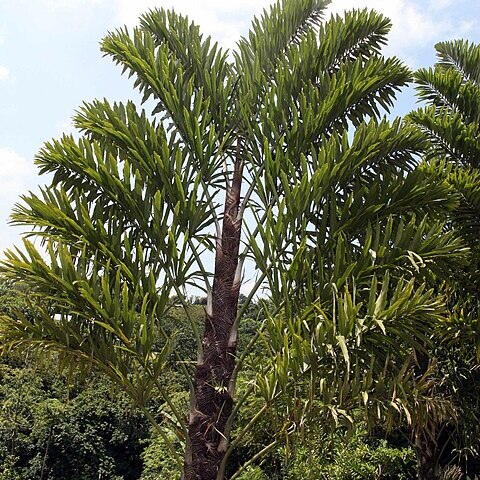A palm. It grows 6 m high. The trunk is fibrous and covered with old leaf bases. These form an interesting pattern. The leaves are 2.4-3 m long, The leaves are feather like and arranged in 2 opposite rows on each side of the trunk. This makes the palm appear flat from one side. The leaflets are broad and with ragged edges. They are grouped in bundles. The flowering stalk appears amongst the leaf bases. It is very large with thousands of fruit. The fruit are round and 1.5 cm across. They are dark red when ripe.

